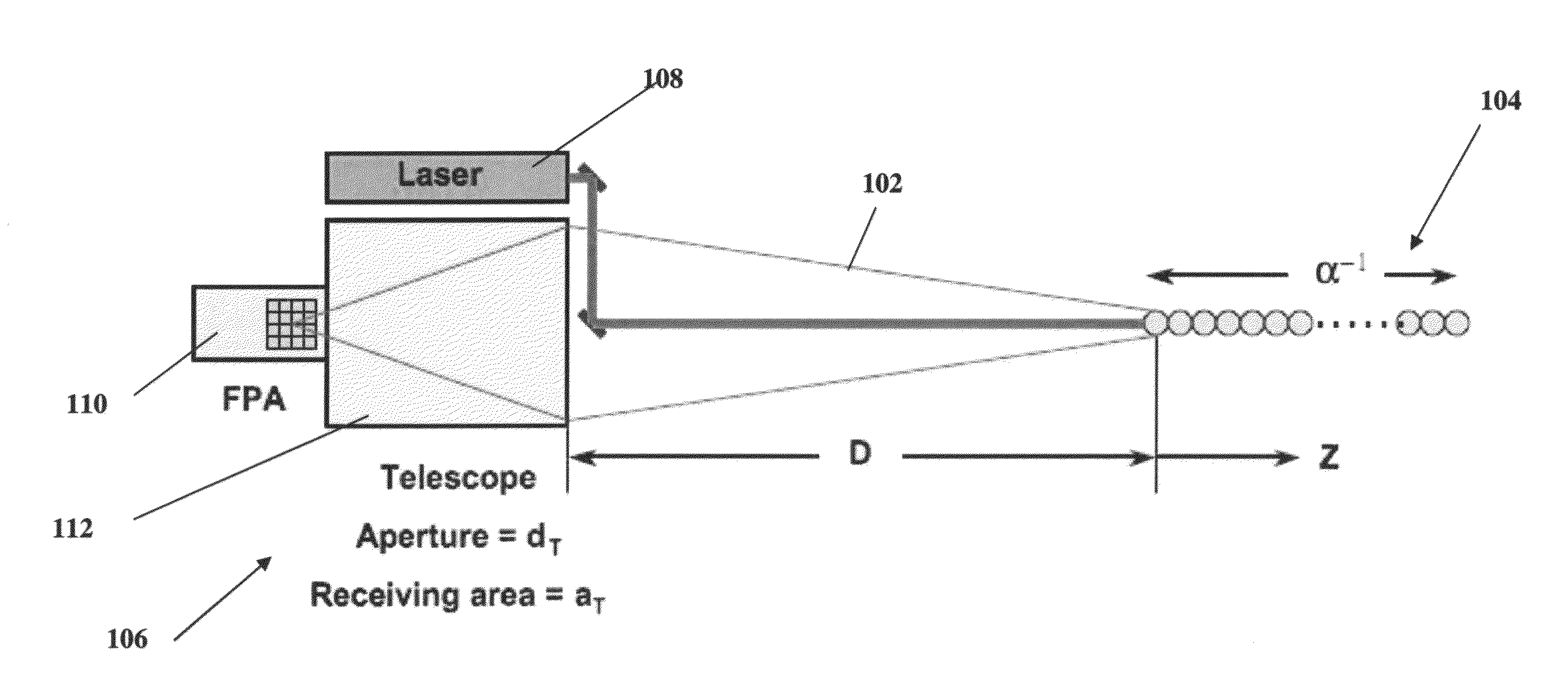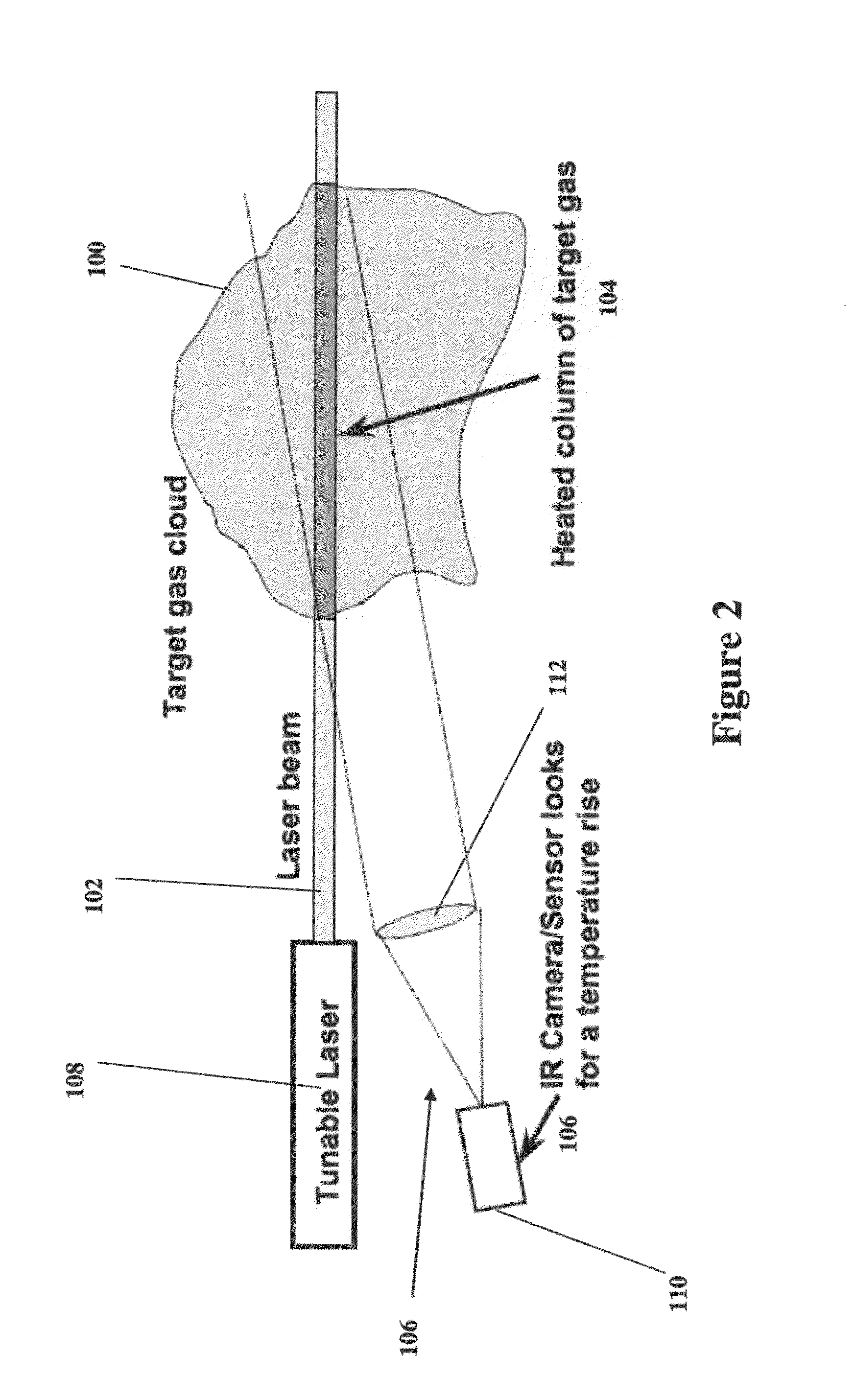Remote optothermal sensor (rose) standoff detection of CWAs, explosives vapors and TICs
a technology of optothermal sensor and remote optothermal sensor, which is applied in the direction of optical radiation measurement, instruments, and investigating moving fluids/granular solids, etc., can solve the problems of difficult problem, significant additional obstacles, and less than satisfactory traditional light detection and ranging (lidar) and differential absorption lidar measurement schemes
- Summary
- Abstract
- Description
- Claims
- Application Information
AI Technical Summary
Benefits of technology
Problems solved by technology
Method used
Image
Examples
Embodiment Construction
)
[0032]The detailed description set forth below in connection with the appended drawings is intended as a description of presently-preferred embodiments of the invention and is not intended to represent the only forms in which the present invention may be constructed and / or utilized. The description sets forth the functions and the sequence of steps for constructing and operating the invention in connection with the illustrated embodiments. However, it is to be understood that the same or equivalent functions and sequences may be accomplished by different embodiments that are also intended to be encompassed within the spirit and scope of the invention.
[0033]The present invention resides in a novel system and method for standoff detection of explosives, CWAs and TICs using optical techniques. Preliminary analysis indicates that TNT can be detected at a distance of 0.5 km with a signal-to-noise ration exceeding 10,000. Optical techniques may permit unambiguous detection of target mole...
PUM
| Property | Measurement | Unit |
|---|---|---|
| wavelengths | aaaaa | aaaaa |
| wavelengths | aaaaa | aaaaa |
| temperature | aaaaa | aaaaa |
Abstract
Description
Claims
Application Information
 Login to View More
Login to View More - R&D
- Intellectual Property
- Life Sciences
- Materials
- Tech Scout
- Unparalleled Data Quality
- Higher Quality Content
- 60% Fewer Hallucinations
Browse by: Latest US Patents, China's latest patents, Technical Efficacy Thesaurus, Application Domain, Technology Topic, Popular Technical Reports.
© 2025 PatSnap. All rights reserved.Legal|Privacy policy|Modern Slavery Act Transparency Statement|Sitemap|About US| Contact US: help@patsnap.com



